
Low-heat roasting is one of the best ways to cook a roast in order to get even cooking all the way through the roast and avoid overcooked or dried out ends. It is certainly possible to cook a roast in 3 hours at 200 degrees Fahrenheit, however whether this is enough time to fully cook the roast depends on a few factors including the type of roast, the size of the roast and your desired level of doneness.
Roasts Work Best for Slow Roasting
Some roasts are better than others for the dry method of low-heat roasting. Forget roasting altogether for cuts with lots of connective tissue like chuck roasts; these kinds of roasts are better for higher-moisture cooking methods like braising or stewing. Cuts that work well for roasting, in general, are already tender and flavorful on their own, including cuts like strip loin, sirloin and tenderloin roasts. Less expensive roasts that also turn out reasonably flavorful and tender with low-heat roasting -- but will still not be as flavorful as some of the more expensive cuts -- include boneless shoulder, top round and eye of round.
Size Considerations
While cooking times will vary according to the type of the roast you plan to cut, a general rule of thumb for cooking time for beef that's slow-roasted at 200 F is between 45 minutes and 1 hour per pound for medium-rare. Thus, if you wish to cook a roast in 3 hours or less, a whole prime rib is definitely out of the question. To hit 3 hours for slow roasting, it is best to go with a smaller roast -- about 3 pounds or less.
Searing
If you plan to slow roast your beef at a low oven temperature, there are a couple of reasons why it's best to sear it first. First, with a low temperature of 200 F, the surface of the beef will not heat up quickly enough to kill surface bacteria on the meat within the safety zone of 2 hours. Second, searing browns the exterior of the meat, and this browning, knows as the Maillard Reaction, creates the deliciously savory and complex flavors we associate with properly grilled and roasted meats. Without browning, your roast will lack a considerable amount of flavor. To sear the roast, heat a large sauté pan or cast-iron skillet lightly coated with cooking oil over high heat on your stovetop. Once the oil begins to lightly smoke, place the roast in the pan. Sear the roast on all sides, turning as necessary with tongs, until dark brown.
No Carryover
Many beef recipes and temperature charts give a “pull” temperature for beef that is typically around 5 to 10 F below the intended target finished internal temperature beef. This is due to a phenomenon called “carryover cooking.” Generally, when a piece of meat, especially a larger piece of meat like a roast, is removed from a heat source like an oven or grill, its interior will continue to cook for another 15 to 30 minutes. However, with a roast cooked at a temperature as low as 200 F, you should pull out the roast right at your target internal temperature, which would be 125 F for rare, 130 F for medium rare or 145 F for medium.
Related Articles
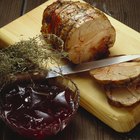
Can Roasting a Pork Roast at a Higher ...
How to Cook a Rib-Eye Roast Without ...
How to Cook a Spencer Roast
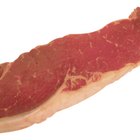
The Difference Between a Sirloin Roast ...

How to Cook a Beef Roast in a Roaster ...

Does Cooking at a Low Temperature for a ...

How to Cook Angus Beef in the Oven
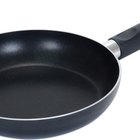
How to Cook Beef Top Round Pot Roast
How to Cook Boneless Top Chuck Steak in ...

How to Cook Sliced Roast Beef for ...
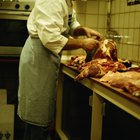
Cuts of Meat From a Front Quarter of ...

Is the Rib Eye or Sirloin a Better Cut?

Different Cuts of Steak

How to Cook a Restaurant-Quality Prime ...

How to Convection Roast a Brisket
What Are the Less Expensive Cuts of ...
How to Cook Pre-Seasoned Porketta
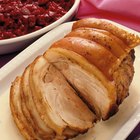
Does Cooking a Pork Roast Frozen Help ...

How to Cook a Standing Rib With the ...

How to Cook a Roast Beef With a Pop-Up ...
References
- Washington Post: Slow-Roasted Beef
- WFSB: Prudence Makes Slow Roasted Beef
- Slate: Food Explainer -- Why Does Food Taste Better When it’s Browned
- Cooking For Engineers: Prime Rib or Standing Rib Roast
- Le Cordon Bleu Complete Cooking Techniques; Jeni Wright and Eric Treuille
Writer Bio
Kurt Schrader has been writing professionally since 2005. He has also worked in the hospitality and travel industries for more than 10 years. Schrader holds a bachelor's degree in management, a master's degree in information studies and a Juris Doctor from Florida State University.
Photo Credits
Jupiterimages/liquidlibrary/Getty Images